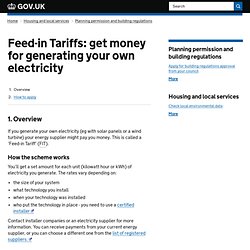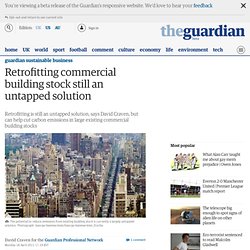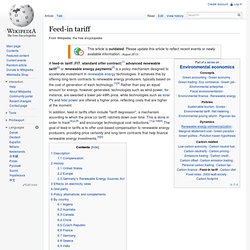

Untitled. Case studies. Low Energy Buildings Projects. PrincedonDale Road. Footprint recently paid a visit to 100 Princedale Road by paul davis + partners . The project was the first Victorian retrofit to receive Passivhaus certification in the UK. As part of the Retrofit for the Future programme, funded by the Technology Strategy Board , the aim was to see an eighty percent reduction in carbon emissions based on 1990 levels. They decided to achieve this through the implementation of Passivhaus principles, as it was recognised that in order to gain the required reduction in carbon emissions something radical needed to be done. Thermal imaging carried out before improvements clearly shows problems with the building fabric. 100 Princedale Road is a four storey Victorian house in a conservation area. Building facts: The garden before the retrofit, showing where the light well and additional window were to be placed. New decking was installed creating a habitable outdoor space. metal grating allows light into the kitchen window below.
Passivhaus refurbishment: Solar PV Case Study: Care Home, London. The Green Deal. Green Deal / Dept of Energy. Feed-in Tariff. If you generate your own electricity (eg with solar panels or a wind turbine) your energy supplier might pay you money.

This is called a ‘Feed-in Tariff’ (FIT). How the scheme works You’ll get a set amount for each unit (kilowatt hour or kWh) of electricity you generate. The rates vary depending on: the size of your system what technology you install when your technology was installed who put the technology in place - you need to use a certified installer Contact installer companies or an electricity supplier for more information.
The export tariff - selling surplus energy As well as the generation tariff, you can also sell any extra units you don’t use back to your electricity supplier. You’ll get 4.5p per unit of electricity: for solar panels where you applied for FIT on or after 1 August 2012 for other technologies where you applied for FIT on or after 1 December 2012 If you applied for FIT before these dates you’ll continue to get 3.2p for each unit of electricity. Pay as You Save Taskforce. Retrofit. Non-Domestic Buildings. Retrofitting commercial building. In recent months, legislative, economic and commercial forces have converged around the need to improve business sustainability, creating an imperative for change in the UK property market.

For businesses striving to reduce the carbon impact of their operations, their premises can play a vital, but as yet largely overlooked, role. Increasingly it is understood that the built environment accounts for a significant 44% of UK emissions, of which 18% is from non-domestic buildings. Although new properties are ever more environmentally friendly, only 2% of the UK's existing stock is less than five years old.
The emissions from existing non-domestic stock therefore present a specific challenge. Until recently the public policy agenda has focused largely on driving low-carbon outcomes in new build and major refurbishments. Retrofit Solar Panel Feed-In Tariff. What does Retrofit mean?

Retrofit or Retrofitting refers to the addition of a new feature or new technology to an older system. In terms of Solar Panel application it is the improvement to an existing building by the installation of energy efficient technology. In 2009 the Technology Strategy Board initiated the "Retrofit for the Future" project, to highlight and stimulate the interest in retrofitting the UK's housing stock. Over 300 design teams submitted applications, the successful ones receiving a £150,000 grant to develop and deliver their project to its conclusion. The energy performance of all of the retrofitted properties will be studied and evaluated over a two year period, providing a raft of solar solutions, which can be standardized for application to future mass retrofit projects.
Feed-in tariff. A feed-in tariff (FIT, standard offer contract)[1] advanced renewable tariff[2] or renewable energy payments[3] is a policy mechanism designed to accelerate investment in renewable energy technologies.

It achieves this by offering long-term contracts to renewable energy producers, typically based on the cost of generation of each technology.[1][4] Rather than pay an equal amount for energy, however generated, technologies such as wind power, for instance, are awarded a lower per-kWh price, while technologies such as solar PV and tidal power are offered a higher price, reflecting costs that are higher at the moment. Solar PV: UK Feed in Tariffs. Feed-in tariffs slashed. Feed in Tariff Best Practice. Feed_in_tariffs. Skanska, GE & ARUP. Energy Retrofit of London’s Commercial Building Stock - World Cities Network. Buildings consume about 40% of the world’s primary energy and they are responsible for 40% of global CO2 emissions.

In London, nearly 80% of emissions come from buildings, including 42% from workplace buildings. ESCO UK. Europe Retrofit. National rollout of London's retrofit scheme to help councils cut emissions. Carbon emissions have been cut by almost a third by one Greater London council through the RE:FIT public sector retrofitting scheme.

Photograph: Sarah Lee for the Guardian In November 2012 the Department for Energy and Climate Change (DECC) announced it would fund a nationwide rollout of RE:FIT, Boris Johnson's programme to improve energy efficiency in the public sector. The scheme works by helping public organisations retrofit their buildings with energy-saving technology that did not exist when they were first built such as combined heat and power, photovoltaic solar panels, low-energy lighting and more efficient boilers.
The mayor's programme, first launched in 2008, was revised earlier this month to incorporate the lessons learned from the work carried out so far. The changes include making the scheme more flexible and simpler, as well as extending the range of funding options available. David Rees is head of local government services at PA Consulting. UK Government Energy Bill to Push Energy Efficiency and Renewables. Edward Davey introduced Government’s new Energy Bill to Parliament on November 29, 2012.

Pushing what they refer to as radical reforms to the electricity market and low-carbon infrastructure and manufacturing, the Energy Bill includes investments in the energy infrastructure, renewables (including new nuclear, gas, and CCS), as well as mechanisms for encouraging improvements in efficiency. Government officials stated that it was their hope that shifting to a lower-carbon economy would cushion the economy and individual households from wildly fluctuating energy prices.